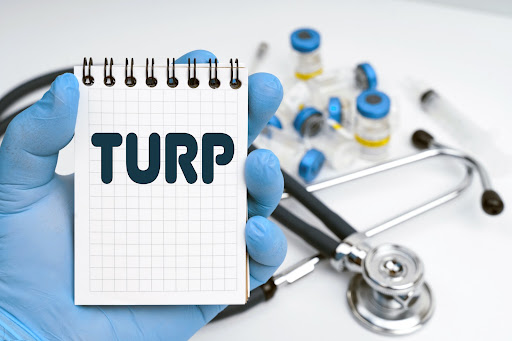Transurethral resection of the prostate (TURP) is a surgery used to treat urinary problems that are caused by an enlarged prostate. About one in three men over the age of 50 have urinary symptoms. The most common cause of these symptoms is an enlarged prostate. Normal urinary function can be restored by removing obstructing prostate tissue in the urethra, which passes through the prostate. An enlarged prostate, also called Benign Prostatic Hypertrophy (BPH), is a common condition as men get older. Benign simply means non-cancerous, prostatic means related to the prostate, and enlargement refers to an increase in size.
Hyperplasia means an increase in the number of cells. It is this increase in cells that makes the prostate grow bigger. This enlargement, or growth however, isn’t caused by cancer, nor does having an enlarged prostate increase your risk of getting prostate cancer. The two problems usually begin in different parts of the prostate. But men can have an enlarged prostate and prostate cancer at the same time.
What Is a TURP?
A transurethral resection of the prostate (TURP) is surgery to remove part of the prostate gland through the penis. No incisions are needed. During TURP, a doctor inserts a thin tool into the urethra. This tool has an electric current or laser that allows the doctor to remove part of your prostate in order to relieve urinary symptoms. TURP may be recommended if you have any of these urinary symptoms:
- Difficulty emptying your bladder
- Extremely slow urination
- Getting up often at night to urinate
- Frequent urinary tract infections
- Bladder control issues
- Damage to the kidneys due to an inability to urinate
- Bleeding from the prostate
- Bladder stones with prostate enlargement
Two Types of TURP Surgery
There are two types of TURP surgery performed:
- Traditional TURP: a scope is inserted into the urinary channel into the prostate where the obstructing prostatic tissue is removed with an electric cutting instrument.
- Laser TURP: a scope is inserted through the urinary channel into the prostate where the obstructing prostatic tissue is removed with a laser. There are several types of lasers that are effective for this like Green Light and Thulium.
Both procedures are well established with improvement in urinary symptoms.
After TURP Surgery
Transurethral resection of the prostate relieves symptoms of an enlarged prostate most of the time. You may experience some short-term side effects such as frequent urination, the need to urgently urinate, burning with urination, and blood in your urine. These symptoms will gradually improve over 4 to 6 weeks.
The prostate will usually start to grow again after surgery and about one in ten men need a repeat procedure within ten years of having TURP. Over 75% of men will eventually experience symptoms of prostate enlargement.

